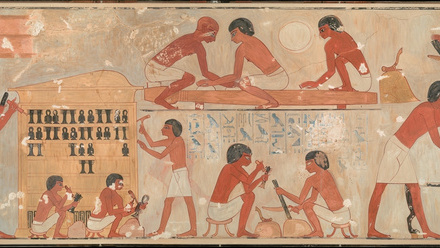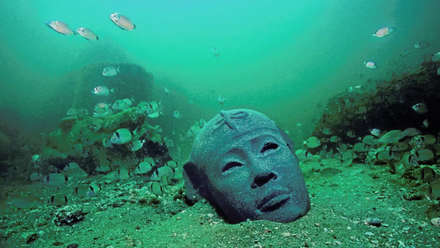Tutankhamun
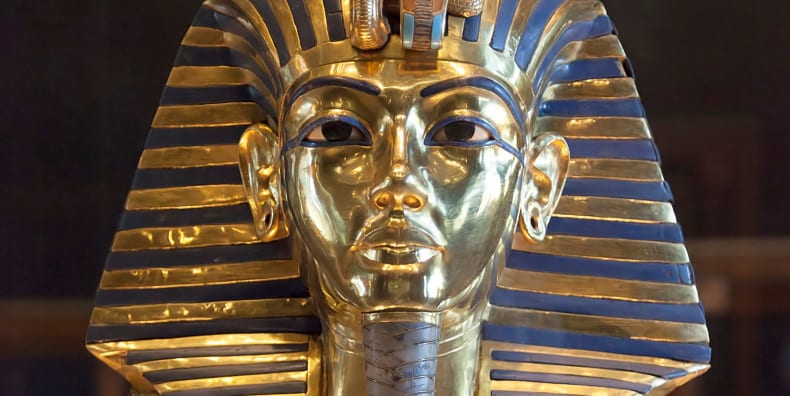
The almost intact burial of Tutankhamun was discovered in 1922 in the Valley of the Kings of Egypt. His body was laid to rest there more than 3000 years ago during the New Kingdom period of ancient Egypt. During this time, Egypt’s rulers were buried in deep tombs cut into the rock of a desert valley near to the city of Thebes – the religious centre of Egypt at the time.
The tomb of Tutankhamun remains the most intact royal burial discovered in Egypt from this period when it was uncovered by a team directed by Howard Carter (1874-1939) under the financial backing of Lord Carnarvon (1866-1923). Here we will learn more about the life of Tutankhamun, his death and burial, and his afterlife since 1922.
The Boy King
Tutankhamun was born and raised at the city of Akhetaten in Middle Egypt, 400km north of Thebes. It was here that his father, the king Akhenaten, founded a new royal city dedicated to the god Aten. The Aten, depicted as the disk of the sun, was considered a creator god who gave life to everything in the world. Akhenaten promoted the Aten above all the Egyptian pantheon, forsaking the other deities and allowing their temples to fall into ruin. When Tutankhamun was born, he was originally called Tutankhaten or ‘Living Image of the Aten’ in honour of his father’s chosen god. When Tutankhamun ascended to the throne, at the age of just 8 or 9 years old, he changed his name to Tutankhamun, or ‘Living Image of Amun’, and reverted to the old pantheon of deities, restoring their temples, and relocating the royal court back to Thebes. In his restoration text he claimed to have:
Repaired what was ruined, repelled disorder throughout the Two Lands, so that Maat (order and justice) rests in her place as he causes falsehood to be abomination and the land to be like its primeval state. When he appeared as king, the temples and the cities, from Elephantine (south) as far as the Delta marshes (north) were fallen into decay and their shrines were fallen into ruin, having become mere mounds overgrown with grass.
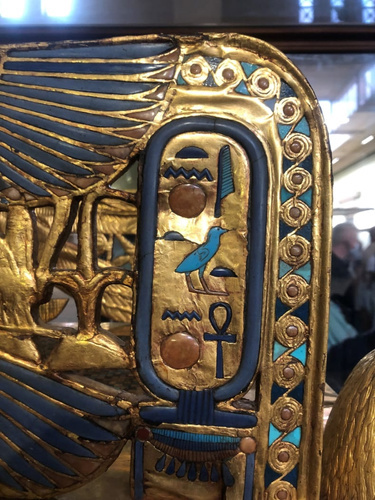
Left: Tutankhamun’s original name, Tutankhaten, can still be seen on some of his burial goods such as on the arm of this throne now in the Egyptian Museum, Cairo.
An early death
The subject of how Tutankhamun died, at a young age of just 18 or 19 years old, has been discussed by specialists since 1922. While some believe that Tutankhamun suffered from genetic diseases, others have speculated that he died more brutally, in a chariot accident or perhaps even the victim of assassination. What we do know is that Tutankhamun died at a young age and possibly unexpectedly, as his tomb was not yet complete.
When the young king died, his body was mummified, embalmed, and encased within 8 shrines and coffins in the burial chamber. The king was accompanied on his journey to the afterlife with thousands of treasures. While some are made of gold, precious alabaster, and gems, others offered more practical support to help him reach the afterlife and join his ancestors. Clothing and pillows to help him rest, weapons to repel evil spirits that would hinder his path, and food to sustain him on the journey.
When the tomb of Tutankhamun was discovered in 1922, it took Howard Carter and his team of experts more than 10 years to record, conserve, and remove the artefacts found within it. Today, these artefacts remain in Egypt and will soon be on display at the Grand Egyptian Museum.
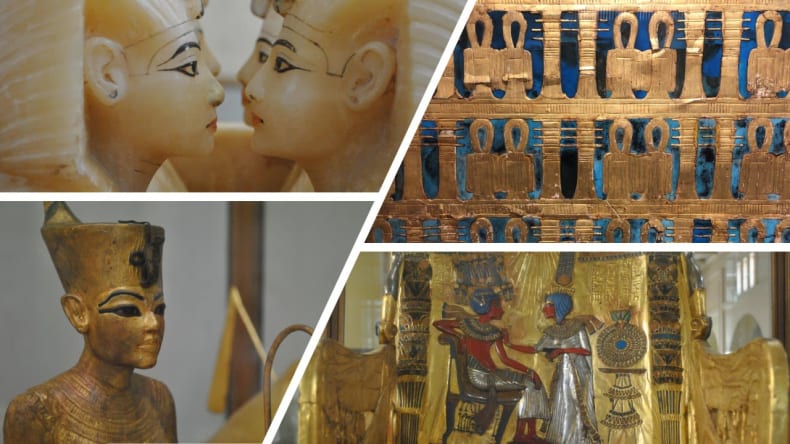
‘Wonderful things’ – some of the precious artefacts uncovered in the tomb of Tutankhamun.
Tutankhamun’s afterlife
With all the precious burial goods that accompanied him. It is likely that Tutankhamun did achieve his place in the Egyptian afterlife. In the modern world, however, Tutankhamun has achieved a very different afterlife. Having once been a forgotten Pharaoh, he is now the most famous – his name is known by every child at school and his golden mask is one of the most well-known artefacts of the ancient world. His name, and tomb, have inspired countless movies and novels, and motivated many to enter the field of archaeology in the hope of new discoveries.
Tutankhamun is more than the sum of his tomb or his mysterious death, however. He was a living king, and young boy, whose life was tragically cut short. In his short reign he achieved much, restoring Egypt’s administrative and religious systems, and re-establishing it as a world leader more than 3000 years ago.
Have a go at designing your own golden mask!
Download a template here
Wonderful things: What would you take to the afterlife?
Download the activity here
Fact file
- Tutankhamun lived in the 18th Dynasty of ancient Egypt’s New Kingdom around 1341-1323 BCE (over 3300 years ago!)
- Tutankhamun was originally called Tutankhaten, or ‘Living Image of the Aten’
- He changed his name to Tutankhamun, or ‘Living Image of Amun’ when he became Pharaoh at the age of 8 or 9 years old.
- He restored Egypt’s old pantheon of gods and goddesses
- He died very young in mysterious circumstances at the age of just 18 or 19 years old.
- He was buried in the Valley of the Kings with thousands of items to help him in the afterlife.
- His tomb was discovered in 1922 by a team directed by Howard Carter and funded by Lord Carnarvon.

